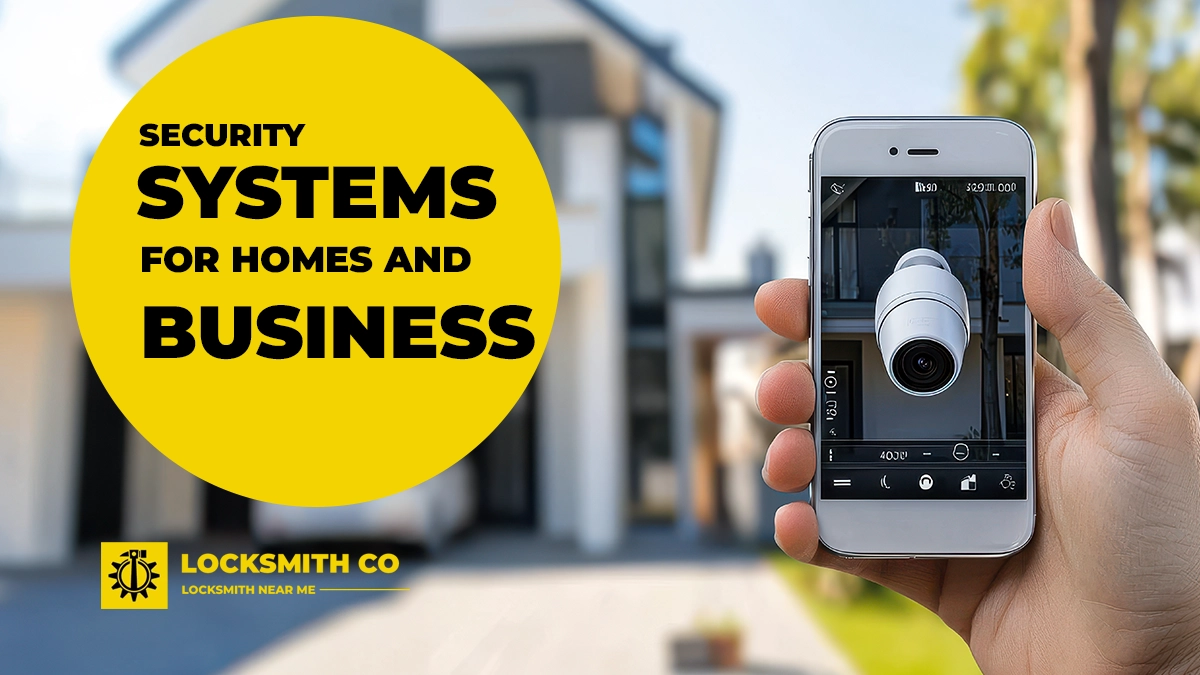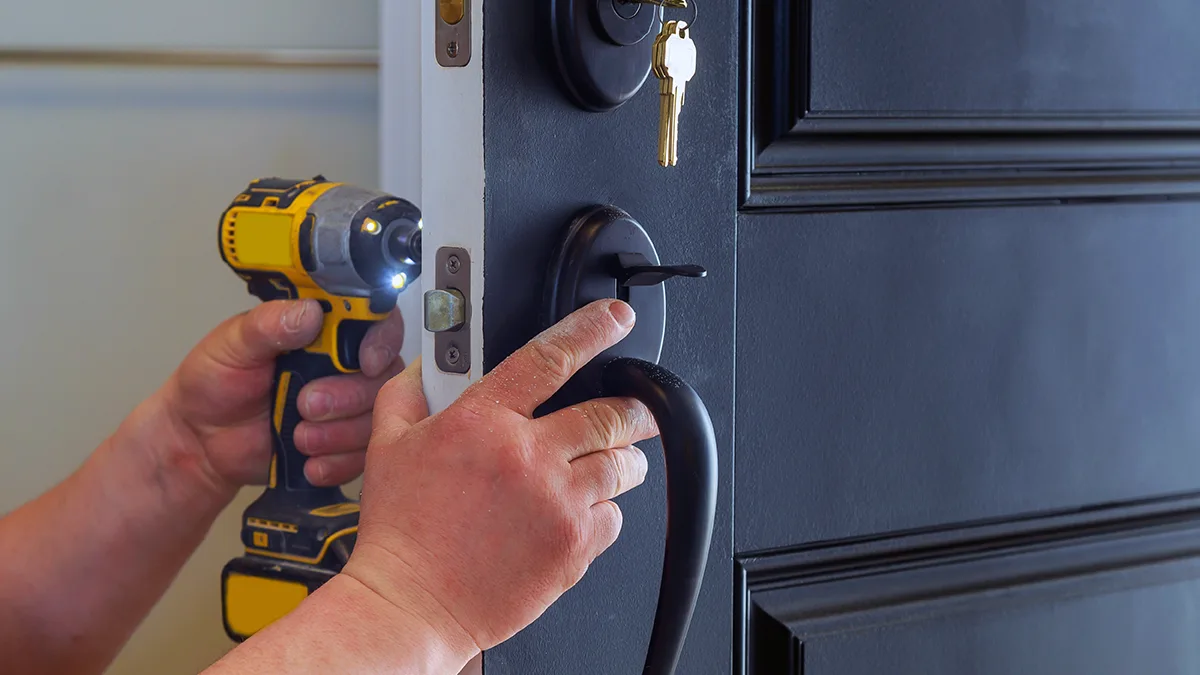Everything You Need to Know About uPVC Door Lock Repairs. In today's fast-paced world, ensuring the…
The Best Security Systems for Homes and Businesses: Wireless Alarm Systems Explained
The best security systems for homes and businesses: Wireless alarm systems explained. Wireless alarm systems have revolutionised the way we approach security, offering a seamless and efficient way to safeguard properties without the hassle of extensive wiring.
These systems are ideal for both residential and commercial settings, providing a robust line of defence against intrusions.
The Best Security Systems for Homes and Businesses
As we delve into the best security systems available, we’ll explore how wireless alarms for homes and businesses can be integrated with key safe installations to enhance overall property security solutions.
Whether you’re a homeowner or a property manager, this guide will equip you with the knowledge needed to make informed decisions about installing key safes and selecting the best wireless alarms tailored to your security needs.
Understanding Wireless Alarm Systems
Benefits of Wireless Alarms
Wireless alarm systems offer several advantages over traditional wired systems. Firstly, their installation is much simpler and less invasive, as they do not require extensive wiring throughout the property.
This makes them particularly suitable for older buildings where structural alterations are undesirable.
Additionally, wireless systems provide flexibility in terms of placement, allowing sensors and cameras to be positioned optimally for maximum coverage.
Another significant benefit is scalability. These systems can be easily expanded by adding extra sensors or devices without major modifications.
This is particularly useful for growing businesses or expanding homes.
Furthermore, wireless alarms typically include mobile app integration, enabling real-time monitoring and control from anywhere, enhancing user convenience and peace of mind.
Finally, the reliability of wireless technology has improved significantly, offering robust property security solutions that are resistant to tampering and interference, thus ensuring the safety of both residential and commercial properties.
Wireless Alarms for Homes and Businesses
Wireless alarms are versatile security solutions suitable for both homes and businesses.
For homeowners, these systems offer a discreet yet effective means of safeguarding their property against intruders.
With features like motion detectors, door and window sensors, and integration with smart home devices, wireless alarms provide comprehensive home security.
They are easily tailored to individual needs, from small flats to large houses.
In a business context, wireless alarm systems cater to diverse security requirements.
These systems can secure office spaces, retail environments, and industrial facilities with minimal disruption to existing operations.
They support remote monitoring, allowing business owners to keep an eye on their premises from afar.
Additionally, wireless alarms can be integrated with other security measures, such as CCTV and key safe installations, to enhance overall protection.
Ultimately, wireless alarms offer a flexible, reliable, and efficient approach to securing both residential and commercial properties, meeting varied security demands.
Choosing the Best Security Systems
Selecting the best security system involves several critical considerations to ensure your property is adequately protected.
First, assess the specific security needs of your property, whether it’s a home or a business.
Consider factors such as property size, location, and the level of security required.
For instance, a business in a high-traffic area may necessitate more comprehensive coverage compared to a residential setting.
Next, evaluate the features offered by different wireless alarm systems.
Look for systems that provide a combination of motion detection, video surveillance, and smart integration capabilities.
Mobile app functionality for remote monitoring is also a valuable feature, allowing you to manage security from anywhere.
Compatibility with existing security infrastructure, such as key safe installations, is another important aspect.
Ensure the system you choose can seamlessly integrate with other security measures.
Finally, consider installation ease and the reputation of the provider to guarantee reliable support and service.
Key Safe Installations for Enhanced Security
Importance of Key Safe Installations
Key safe installations play a crucial role in bolstering property security.
They provide a secure method for storing keys outside your premises, reducing the risk associated with lost or misplaced keys.
This is particularly beneficial for property managers and businesses that require multiple people to access a building securely and efficiently.
Key safes are designed to be tamper-proof and weather-resistant, ensuring that keys remain secure under various conditions.
By installing a key safe, you eliminate the need for spare keys hidden under mats or plant pots, which are easily discovered by potential intruders.
Moreover, key safes offer convenience and flexibility.
They allow authorised personnel to access the property without the need for physical key exchange, which can be cumbersome and risky.
This feature is especially useful for rental properties, enabling seamless tenant transitions.
Ultimately, integrating key safe installations with wireless alarm systems creates a comprehensive property security solution, enhancing safety and accessibility.
Installing Key Safes: A Step-by-Step Guide
Installing a key safe is a straightforward process that enhances your property’s security.
Begin by choosing a suitable location outside your property, ideally in a discreet yet accessible spot. Ensure the surface is solid, like brick or concrete, to provide a firm anchor for the safe.
- Gather Tools and Materials: You’ll need a drill, appropriate drill bits, screws, and wall plugs specific to your wall type.
- Mark Drill Holes: Hold the key safe against the wall and mark the positions for the screws using a pencil.
- Drill Holes: Use the drill with the correct bit to make holes at the marked spots. Insert the wall plugs into these holes.
- Secure the Safe: Position the key safe over the drilled holes and use screws to fasten it securely.
- Test the Lock: Ensure the locking mechanism is functioning correctly before usage.
By following these steps, you can confidently install a key safe that complements your overall security measures.
Key Safe Options: Finding the Right Fit
Selecting the right key safe involves considering several factors to ensure it meets your security needs.
First, assess the level of security required. For high-security needs, opt for a key safe with advanced features like an anti-tamper locking mechanism or a reinforced steel body.
Consider the capacity of the key safe. Depending on your requirements, you may need a safe that can hold multiple keys, which is particularly useful for commercial properties or multi-tenant buildings.
Check the size specifications to ensure it can accommodate your keyring or access cards.
The installation environment is another crucial factor. Choose a weather-resistant model if the key safe will be exposed to the elements.
This ensures durability and functionality over time.
Additionally, evaluate ease of use. Safes with a digital keypad or combination lock offer convenience and security.
By carefully considering these options, you can select a key safe that complements your property security solutions effectively.
Comprehensive Property Security Solutions
Property Safety Tips for Homeowners
Enhancing the security of your home involves a combination of strategic measures. Begin by assessing the vulnerabilities of your property.
Ensure doors and windows are equipped with sturdy locks. Consider upgrading to smart locks for added convenience and security.
Lighting plays a critical role in deterring intruders. Install motion-sensor lights around entry points and pathways to illuminate any suspicious activity.
Investing in a reliable wireless alarm system is essential. These systems offer real-time alerts and can be integrated with other smart home devices for comprehensive monitoring.
Additionally, consider installing security cameras to keep a watchful eye on your property.
Opt for models with remote access so you can check on your home from anywhere.
Regularly review and update your security measures. This includes changing access codes and maintaining equipment.
By implementing these property safety tips, you can create a secure environment for your family and protect your home against potential threats.
Effective Security for Businesses
For businesses, a robust security strategy is vital to protect assets, employees, and sensitive information.
Start by conducting a thorough risk assessment to identify potential security gaps.
Implementing a combination of physical and technological measures is key.
Install a wireless alarm system tailored to business needs, offering features like intrusion detection, fire alarms, and system control through mobile apps.
This ensures immediate alerts and responses to security breaches.
Surveillance cameras are crucial for monitoring key areas.
Opt for high-resolution cameras with night vision capabilities to provide round-the-clock security.
Remote viewing capabilities allow business owners to monitor their premises from any location.
Additionally, consider access control systems to regulate entry to specific areas within the business.
These systems can use key cards, biometric scanners, or PIN codes to restrict access to authorised personnel only.
Regularly update security protocols and train employees on security best practices to maintain an effective security posture.
By integrating these measures, businesses can enhance their property security solutions comprehensively.
Integrating Security Features for Maximum Protection
Integrating various security features is crucial for achieving maximum protection of your property.
A multi-layered approach ensures that all potential vulnerabilities are addressed, creating a comprehensive security solution.
Start by combining wireless alarm systems with CCTV cameras.
This integration allows for real-time monitoring and alerts, providing a powerful deterrent against intruders.
The ability to access live feeds via mobile devices enhances the responsiveness of your security system.
Incorporate smart locks and access control systems to regulate entry points effectively.
These systems can be seamlessly integrated with wireless alarms, ensuring that any unauthorised access attempts trigger alerts and lock down protocols.
Key safe installations complement these systems by offering secure key management, reducing the risk of lost or duplicated keys.
Finally, ensure that all components are connected to a centralised control hub.
This allows for streamlined management and coordination of security measures, offering a holistic view of your property’s safety.
By integrating these features, you can fortify your property against diverse security threats.




Comments (0)